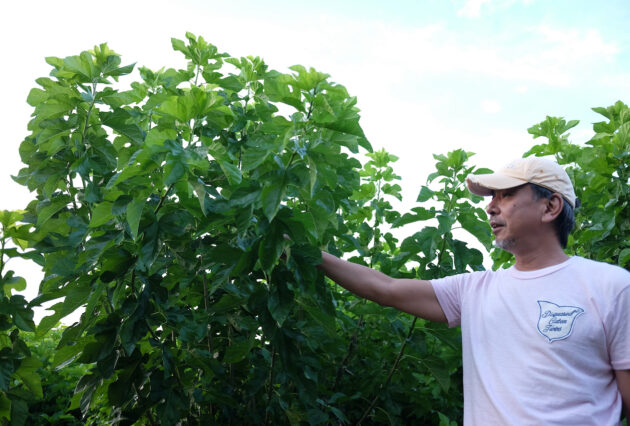
Despite the number of threads in its fabric, the value of a kimono “worth its weight in gold” is not always reflected the actual weight. In the case of the silk made by Katsuyama Takeshi, this is certainly true. Its lightness is indicative not only of a delicately hand-reeled and intricately hand-woven textile, but one that begins with organic farming, nurturing of the silkworms, and hand-processing of the thread. The product of such care and attention is a fabric more like the wing of a dragonfly than a crane. In his world-class artisanal kimono and obi, as well as restorations of historic kimono, Katsuyama demonstrates silk’s highest potential.
“Never repeat the previous generation. Try something new!” This is the creed of the Katsuyama family, silk-textile makers from Kyoto’s famed Nishijin district. In 1967, when most Nishijin weavers were switching to machine looms, Katsuyama’s father Yoshio, the 4th generation master, bucked the trend and opened a hand-loom studio in Shuzan, now part of Keihoku, Kyoto. When Katsuyama took over the family business as the 5th generation master, he struggled to find his own style. One day Katsuyama had an opportunity to see and touch a silk kimono made in the 15th century. The thickness of the silk thread was uneven, but the fabric was softer and lighter than any silk he had ever seen. He was shocked. Where and how could he find this kind of silk? On a trip to Milan, he again encountered the same type of silk being used for handkerchiefs. Quite impressed, he asked the shopkeeper where he could find the fabric. Not Italy, but Japan!
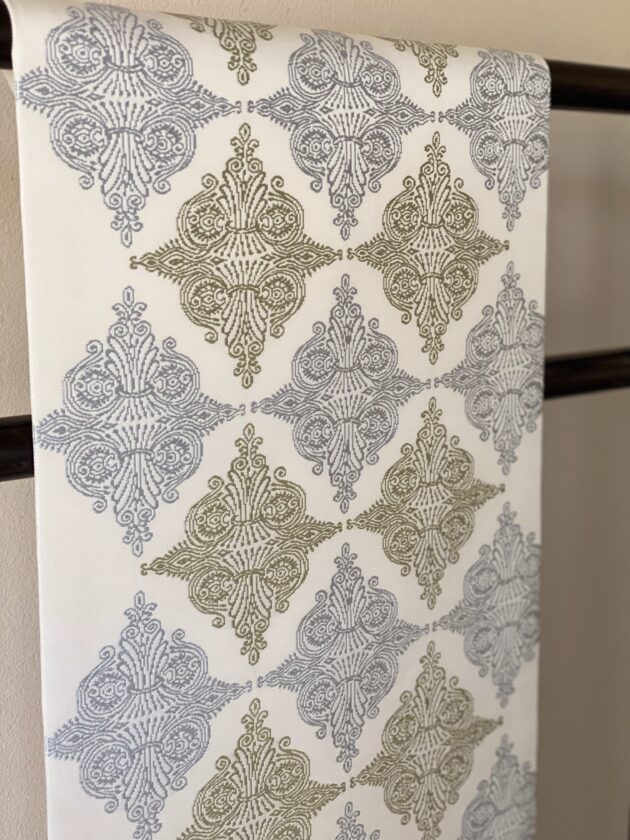
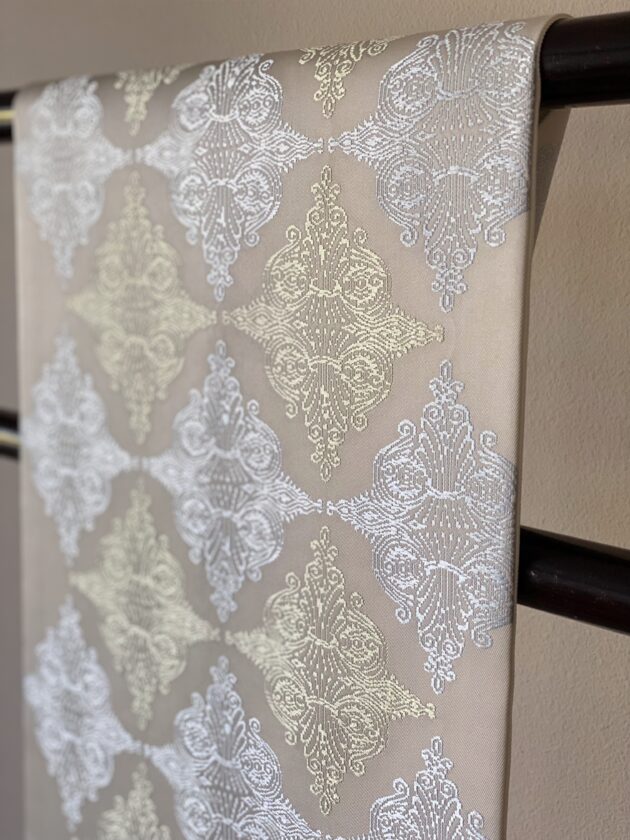
Japan has a long history of silk-making. The oldest domestic silk thread found in Japan dates to the Yayoi period (300 BCE-300 CE), so silk-making, originating in China, must have been introduced to Japan by that time. Many feudal domains in the Edo period (1603 – 1868) encouraged sericulture, and by the 19th century, Japan was producing raw silk from many varieties of silkworms. When Japan opened its doors to the Western world, the newly established Meiji government positioned raw silk as the country’s most important export item. By the 1890s, raw silk accounted for 40% of Japan’s exports, mainly to the US, which mass-produced silk socks and stockings. American manufacturers complained that the uneven quality of Japan’s raw silk was a hindrance to higher production efficiency, and in response, Japan strove to “improve” the quality of its raw silk by systematizing silkworm breeding and standardizing species.
Upon his return from Italy, Katsuyama sought out the handkerchief maker: Shimura Akira, a man who had devoted his life to studying the entire process of silk making. Shimura had discovered that during the Industrial Revolution, Japan had abandoned its traditional silk-making practices to capitalize on new technology and appeal to wider markets. When Shimura began studying silk manufacturing in Okinawa in the 1970s, Japan was almost exclusively producing the raw silk which had been optimized for mass production, utilizing mechanical processes and specifically bred silkworm species. His vision of recreating the quality of silk that had existed before the era of mass-production meant reconstructing traditional methods of silk-making, including identifying different types of silkworm and different ways of reeling thread. Shimura moved to Ehime, and while working as an instructor at Seiyo City Silk Museum, experimented with these methods. The handkerchief Katsuyama found in Italy was one of Shimura’s experiments.
Seeing the possiiblity in Shimura’s experimention, Katsuyama persuaded him to start a sericulture farm together, with the single purpose of creating the most beautiful silk. Shimura agreed and, based on his research, suggested a location somewhere around Komagane in Nagano prefecture. The climate was ideal for growing silkworms, and there were still several sericultural farmers remaining in that region. One such farmer in the neighboring village of Iijima agreed to lend them his farmland. In 2002 the Silk Textile Research Institute was established. Shimura and his apprentice, Akimoto Shigeko, moved to Iijima. Katsuyama spent significant time there while also managing the operations in Nishijin and Shuzan.
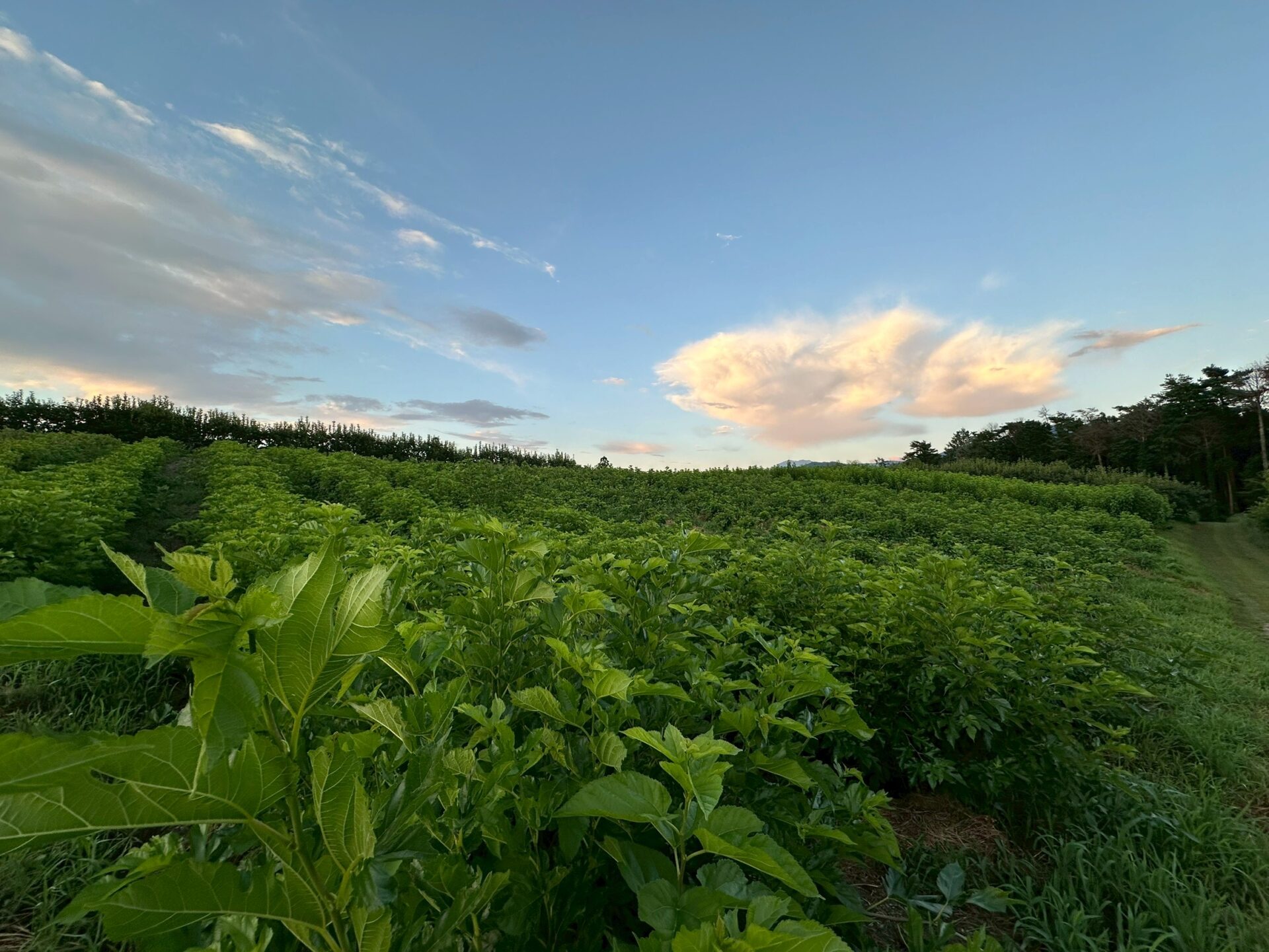
On the Iijima farm, mulberry trees are grown. Their leaves are the only food source for silkworms. The cocoons of these caterpillars are harvested to make silk twice a year, spring and fall. From the various species of silkworms, only those that produce finest thread are selected and bred each season.
After trial and error, Katsuyama selected three varieties of mulberry trees: Nezumi-kaeshi, Kikuba, and Kenmochi. Both spring and fall silkworms are fed with these three varieties, according to their growth stages, to ensure that the size of the cocoons is consistent. The worms won’t eat the newly grown, bitter leaves on the tips of the branches; the larger leaves on the bottom are too coarse. They are fed with only the tenderest leaves from the middle part of each branch.
Sericulture is by definition pesticide-free as any pesticides would weaken the very creature being grown. When neighboring farmers use pesticides, this affects the silkworms’ food source and can force reductions in silk production. Silkworms are also sensitive to the bacteria used to ferment natto. Those feeding silkworms are forbidden to eat natto as, even if they wash their hands and mouths, the natto bacteria might remain on their clothes and hinder the silkworms’ growth. The mulberry trees are pruned in the winter. In the early years, Katsuyama purchased fertilizer labeled as “organic.” He then tried self-sourcing by burning cut branches and fallen leaves and using the ash to enrich the soil. The quality of the silk dramatically improved, and the farm is now 100% organic.
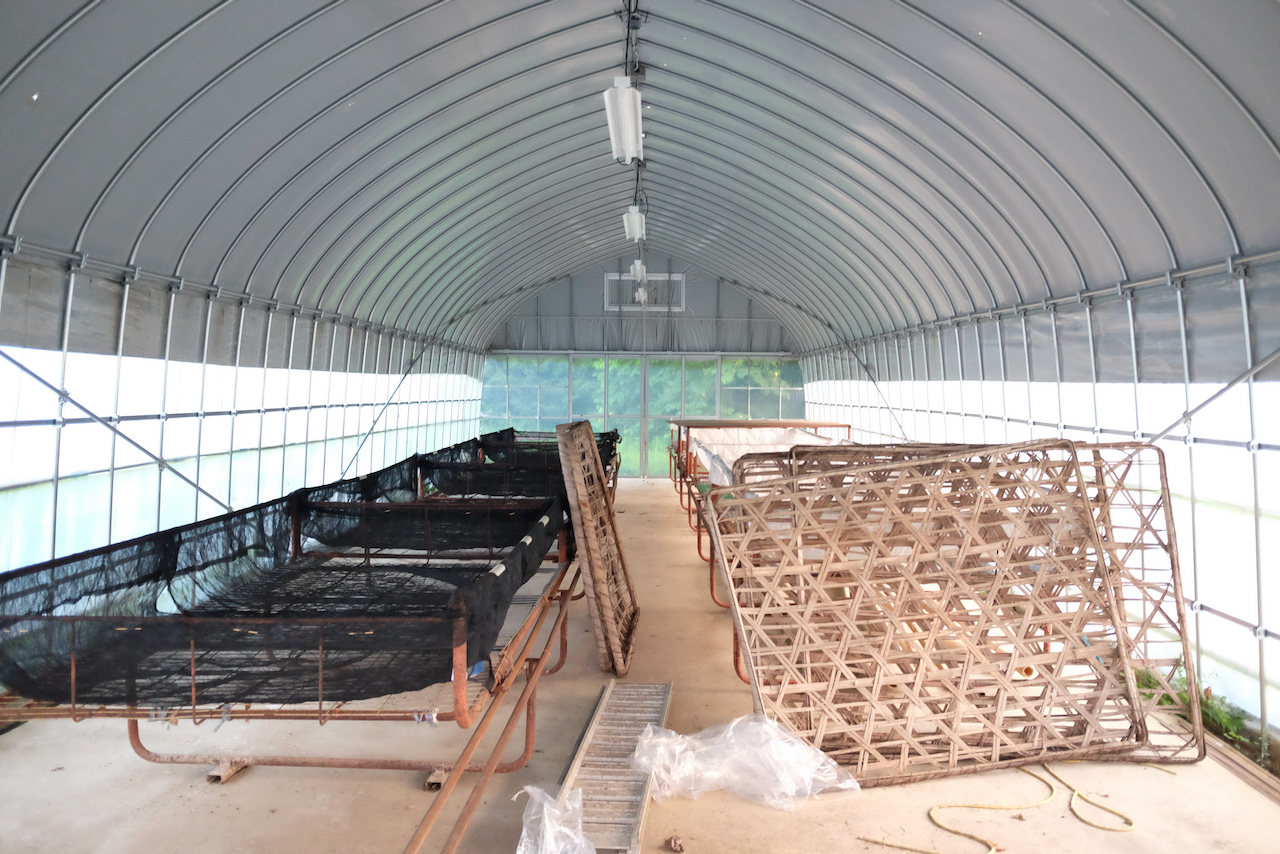
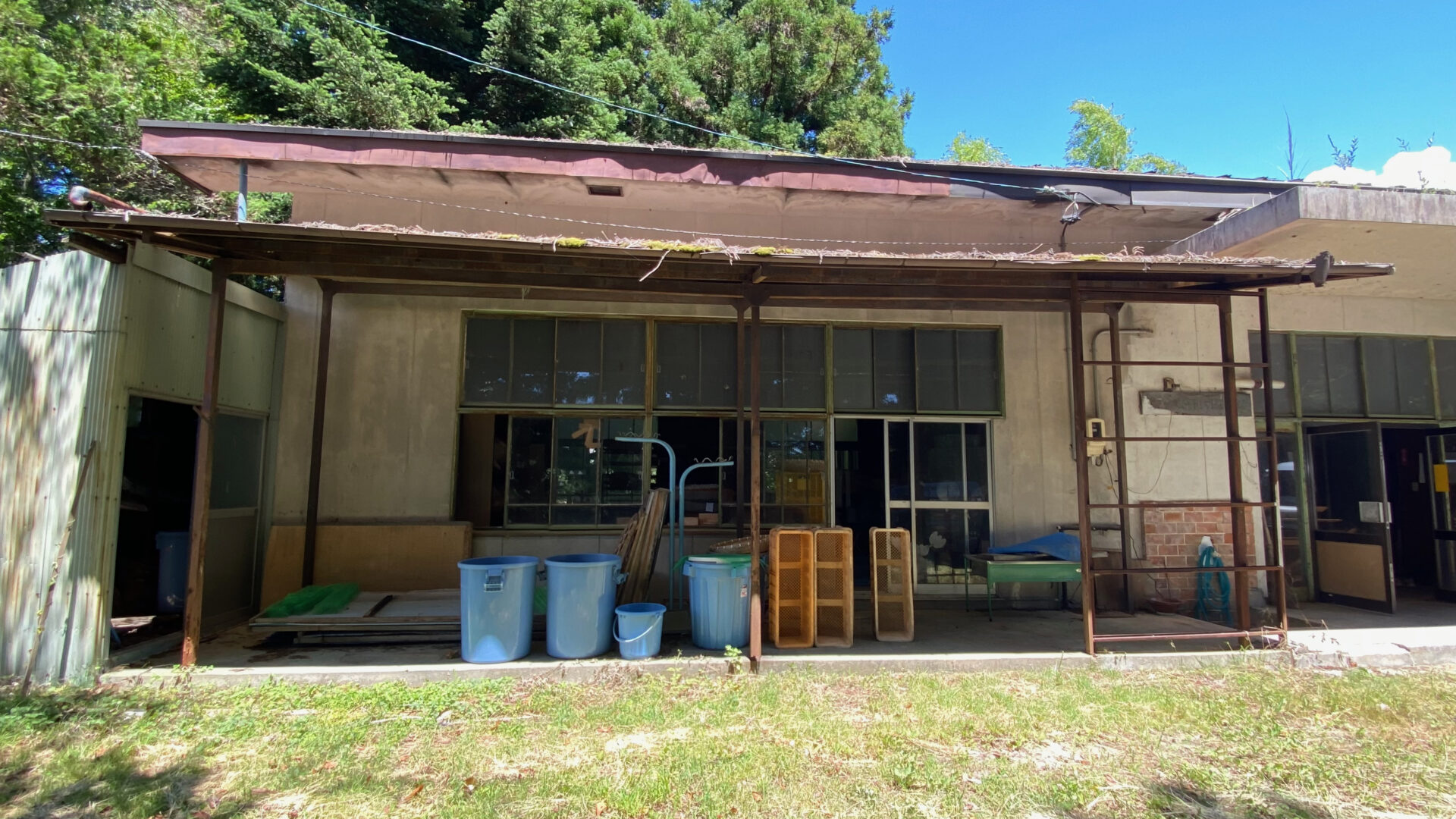
Across from the mulberry farm stands two old sheds where silkworms are grown. The back of the shed has large doors that can fully open to the stream running behind. The temperature is lower there, and the breeze maintains the optimal humidity and ventilation for the healthy development of silkworms. The weaving studio is in a nearby building that used to be a kindergarten. Due to population decrease, the kindergarten was closed years ago, so Katsuyama now rents it from the town.
Before harvesting the cocoons, the silkworms themselves must be killed. Today’s main commercial method is to blow extremely hot air into the cocoons. This eliminates humidity, making them easier to store, but the silk’s natural texture is significantly affected. Shimura found a more natural and time-tested alternative: the cocoons are packed into wooden barrels with salt for two weeks. They are then taken out from the barrel and dried naturally so that the silk’s natural texture and strength are maintained. Next the threads are reeled in batches, and, in what used to be the school auditorium, Katsuyama’s two full-time employees focus on the weaving using two looms. On the smaller loom, Miyajima Mizune weaves usuhaginu, Katsuyama’s thinnest fabric used to make new kimono. The warp and weft threads have been made by the silkworms which were grown by Miyajima herself, then colored with natural dyes like indigo and yasha, made from the Japanese green alder tree. On the larger loom Akimoto Shigeko, Shimura’s apprentice, weaves an even thinner fabric which is used to restore the textile of Japan’s National Treasures.
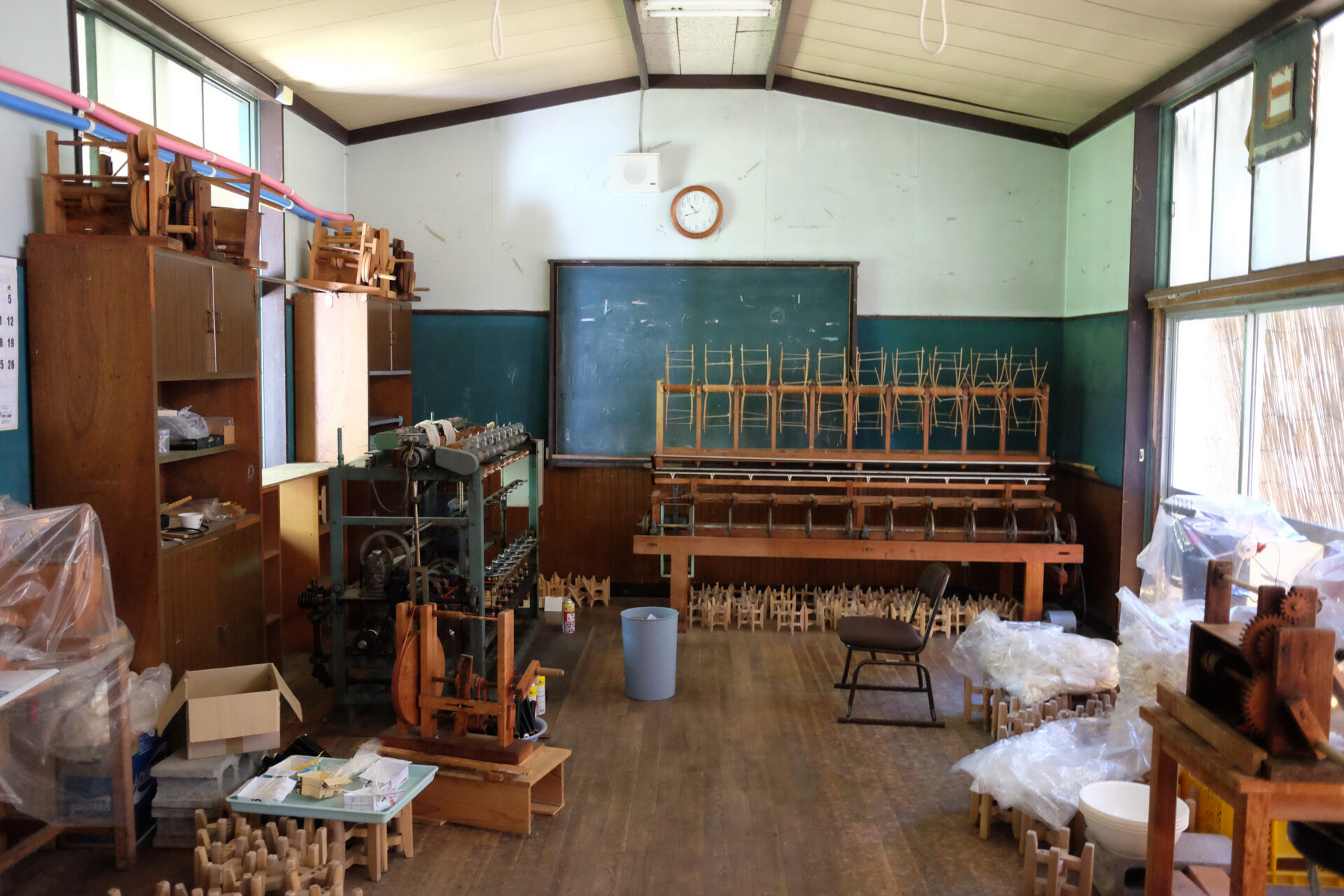
In 2021 Shimura was formally recognized for the preservation of traditional silk production techniques by Japan’s Agency for Cultural Affairs. As he is no longer able to do so himself, his apprentice Akimoto now works with the textile conservators of National Museums, determining the necessary qualities for the repair fabrics. She reels the threads and weaves the material for each project accordingly. One important restoration was of the Kōrin Kimono at the Tokyo National Museum. The silk fabric woven by Akimoto was dyed a dark orange and used as the lining of this National Treasure designed by Ogata Kōrin 300 years ago.
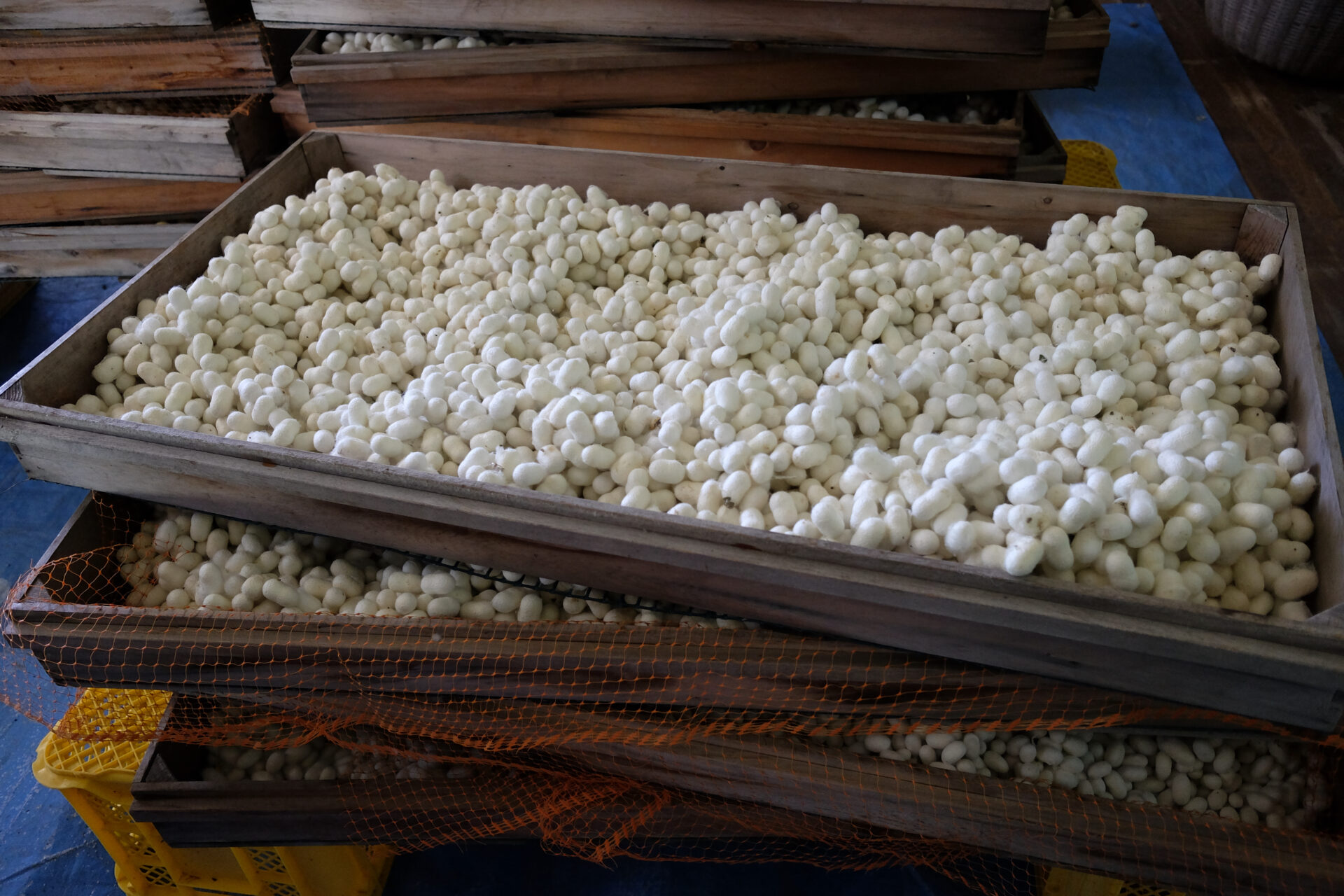
What makes their fabric so thin and light? One secret lies in the reeling process. In the modern method, to maintain uniform thickness, the threads are passed through a small cylinder. The cross-section of the thread becomes a perfect circle, but the thread is somewhat compressed. In the traditional method, on the other hand, the threads are passed through a V-shape point with no compression. This gives the lightness to the fabric. Because the thread is irregular and almost impossible to weave with machine looms though, it must be woven with traditional hand looms.
Since Miyajima and Akimoto spend half of the year on the farm tending the mulberry trees and growing silkworms, they can weave only so much the rest of the year. Miyajima can produce 10 rolls of kimono fabric a year at most. Katsuyama sends the rest of the silk threads reeled in Iijima to Shuzan, where his obi are woven. The irregularity of the thread used in the obi causes diffuse reflection of light and changes in color when viewed from different angles.
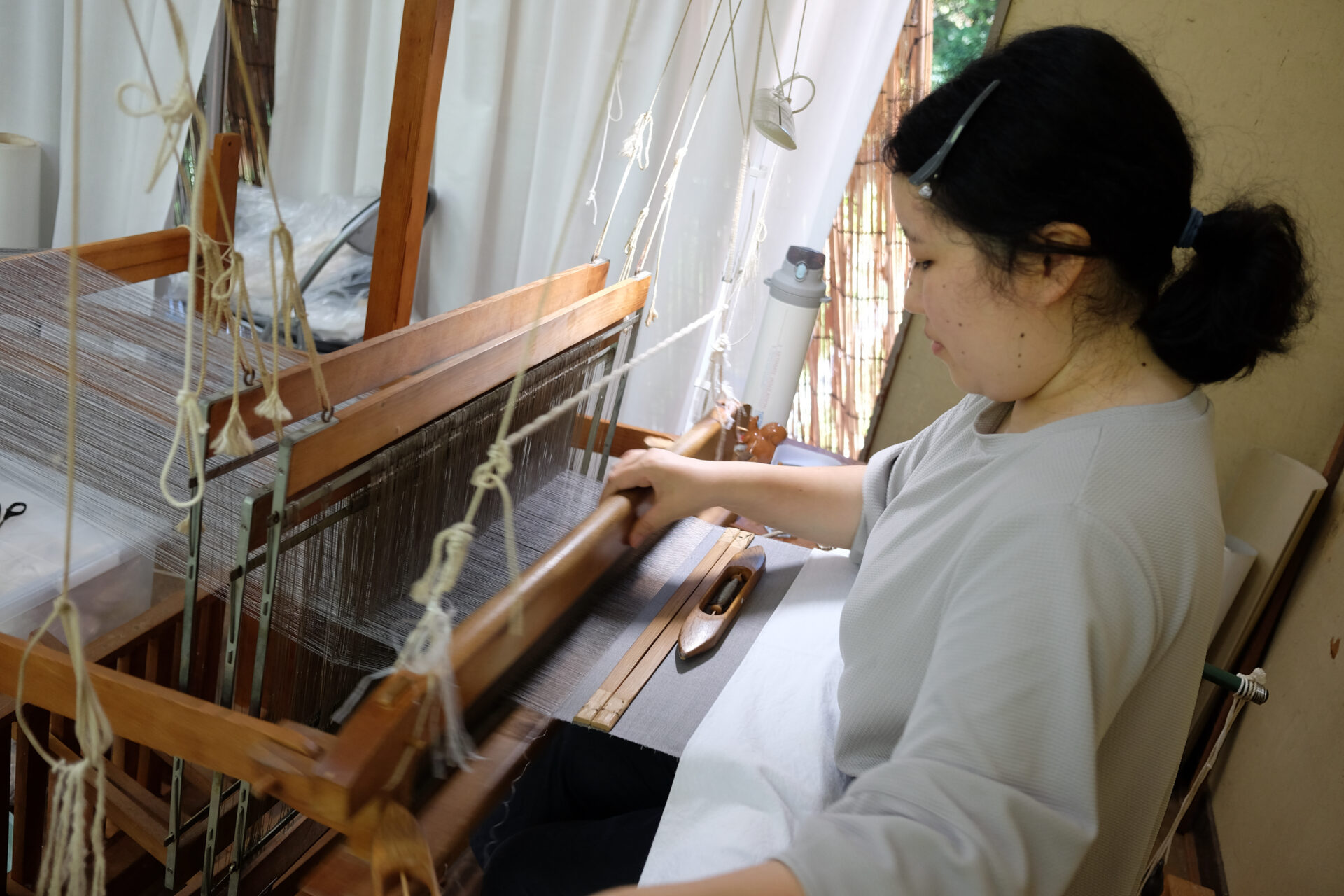
Conventionally, luxurious obi are densely woven and heavy, featuring intricate patterns and multiple colors, including gold and silver. Katsuyama and Shimura, collaboratively, are challenging the conventional wisdom, not with a new approach, but with a revival of centuries-old techniques. The so-called “conventional wisdom” of today may in fact be a historical outlier. In the name of technological advancement, convenience, and efficiency, modern manufacturing has deviated from natural and sustainable practices. Katsuyama’s and Shimura’s vision presents an alternative trajectory toward a true “conventional wisdom.”

Japan-native, SAGAWA AKEMI, founded a US-based nonprofit organization Five Senses Foundation to share the universal value of Japanese traditional cultures with the world by making them relevant within the context of today’s lifestyles. Living in Seattle, Washington, she teaches Sogetsu Ikebana, practices Urasenke Chado, and holds leadership roles with a number of other cultural organizations, including Japan-America Society of Washington State.
www.fivesensesfoundation.org